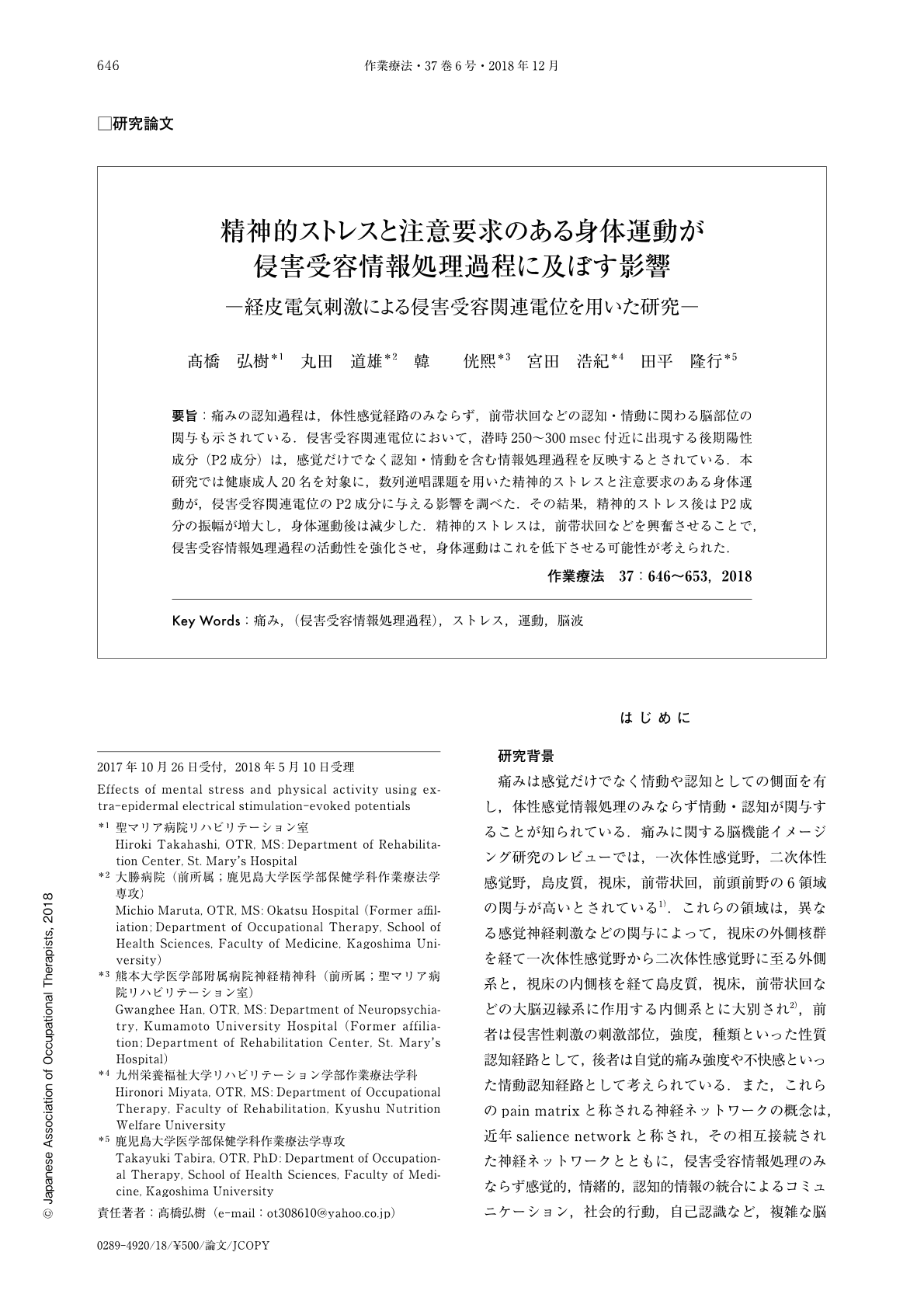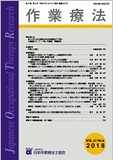Japanese
English
- 販売していません
- Abstract 文献概要
- 1ページ目 Look Inside
- 参考文献 Reference
要旨:痛みの認知過程は,体性感覚経路のみならず,前帯状回などの認知・情動に関わる脳部位の関与も示されている.侵害受容関連電位において,潜時250〜300msec付近に出現する後期陽性成分(P2成分)は,感覚だけでなく認知・情動を含む情報処理過程を反映するとされている.本研究では健康成人20名を対象に,数列逆唱課題を用いた精神的ストレスと注意要求のある身体運動が,侵害受容関連電位のP2成分に与える影響を調べた.その結果,精神的ストレス後はP2成分の振幅が増大し,身体運動後は減少した.精神的ストレスは,前帯状回などを興奮させることで,侵害受容情報処理過程の活動性を強化させ,身体運動はこれを低下させる可能性が考えられた.
Not only somatosensory pathways, but also areas of the brain that control emotion/cognition such as anterior cingulate cortex, are involved in the cognitive processing nociceptive processing of pain. In addition, when measuring the brain's response to pain, the late positive component of the pain-related potential that appears at a latency of 250-300 msec, known as P2, is believed to reflect the mechanism of information processing that includes cognition/emotion rather than represent an actual pain sensation. To better understand the nociceptive processes surrounding pain, we enlisted 20 healthy volunteers to compare the influence of mental stress and physical activity on the P2 component in the pain-related potential using the backward digit span task and the ladder climbing exercise, respectively. The results showed that while mental stress may excite the anterior cingulate gyrus, thus increasing pain perception, physical activity may play a contrasting role in suppressing the perception of pain.

Copyright © 2018, Japanese Association of Occupational Therapists. All rights reserved.


